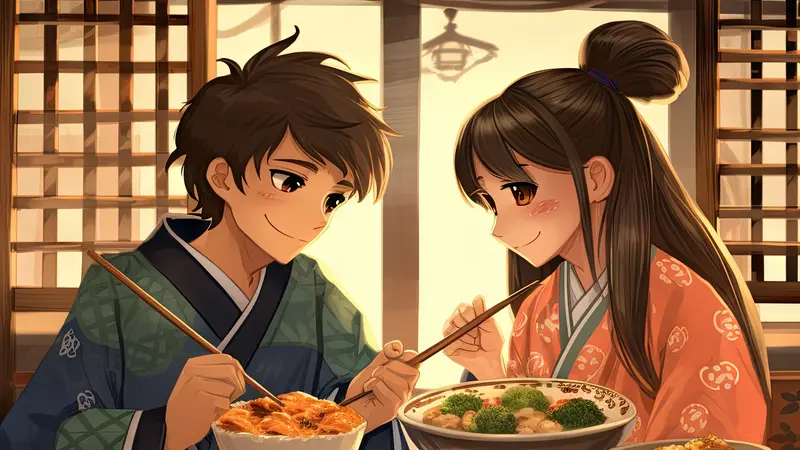Anime, a distinct style of animation originating from Japan, has become a global phenomenon. Known for its colorful artwork, vibrant characters, and fantastical themes, anime has captivated audiences of all ages and backgrounds. This article explores the rise of anime, its unique appeal, and its significant impact on global culture.
The Evolution of Anime
The history of anime dates back to the early 20th century. In the 1960s, Osamu Tezuka’s “Astro Boy” paved the way for modern anime. Over the decades, anime has evolved from simple, black-and-white animations to complex, full-color productions. The 1980s and 1990s marked a golden era for anime with the release of iconic series like “Dragon Ball,” “Sailor Moon,” and “Neon Genesis Evangelion.” Today, anime encompasses a wide range of genres, from action and adventure to romance and slice-of-life, catering to diverse audiences.
The Unique Appeal of Anime
Anime’s unique appeal lies in its ability to blend various art forms and storytelling techniques. Unlike Western animation, which often targets younger audiences, anime explores mature themes and complex narratives. The artistic freedom in anime allows for detailed world-building, intricate character development, and emotional storytelling. Anime also incorporates cultural elements, offering viewers a glimpse into Japanese traditions, customs, and societal norms. This cultural richness, combined with compelling storylines, makes anime a unique and engaging form of entertainment.
The Impact of Anime on Global Culture
The influence of anime extends far beyond Japan. In the United States, the popularity of anime surged in the late 1990s with the introduction of series like “Pokémon” and “Naruto.” Today, anime conventions, such as Anime Expo and Comic-Con, attract thousands of fans worldwide. Streaming platforms like Crunchyroll and Netflix have made anime more accessible, allowing viewers to enjoy a vast library of titles anytime, anywhere. Anime has also influenced other media forms, including video games, movies, and fashion, showcasing its significant cultural impact.
The Role of Technology in Anime’s Growth
Technology has played a crucial role in the growth and evolution of anime. Advancements in animation software have enabled studios to produce high-quality visuals and intricate animations. The internet has also facilitated the global distribution of anime, allowing fans to stream episodes online and participate in fan communities. Social media platforms, such as Twitter and Instagram, have further amplified the reach of anime, enabling fans to share their favorite moments and engage with creators directly.
Popular Anime Genres and Their Appeal
Anime encompasses a wide range of genres, each with its unique appeal. Shonen anime, targeted at young males, features action-packed storylines and dynamic characters. Popular shonen series include “One Piece,” “Attack on Titan,” and “My Hero Academia.” Shojo anime, aimed at young females, often explores romance and personal growth, with beloved titles like “Fruits Basket” and “Sailor Moon.” Seinen anime, intended for adult males, delves into darker, more mature themes, as seen in “Berserk” and “Tokyo Ghoul.” Josei anime, catering to adult females, focuses on realistic romance and life experiences, with series like “Nana” and “Honey and Clover.”
The Art of Anime: Visuals and Soundtracks
One of the most striking aspects of anime is its visual style. Anime artists use a variety of techniques to create stunning visuals, from hand-drawn animation to computer-generated imagery (CGI). The character designs, backgrounds, and color palettes contribute to the overall aesthetic and atmosphere of the series. Additionally, anime soundtracks play a vital role in enhancing the viewing experience. Composers like Yoko Kanno and Joe Hisaishi have created memorable scores that complement the emotional and narrative depth of their respective series.
Anime and Its Cultural Significance
Anime is more than just entertainment; it is a reflection of Japanese culture and values. Many anime series explore themes such as friendship, perseverance, and the struggle between good and evil. These themes resonate with viewers on a universal level, fostering a sense of connection and empathy. Anime also addresses social issues, such as mental health, discrimination, and environmental concerns, prompting viewers to reflect on their own lives and societies.
The Future of Anime
The future of anime looks promising, with new series and films continually pushing the boundaries of creativity and innovation. The integration of virtual reality (VR) and augmented reality (AR) technologies promises to revolutionize the way we experience anime. As the global fanbase continues to grow, anime will likely become even more mainstream, influencing a broader range of media and entertainment industries.
How to Get Started with Anime
For those new to anime, getting started can be overwhelming due to the vast number of titles available. A good starting point is to explore popular and critically acclaimed series. “Fullmetal Alchemist: Brotherhood,” “Death Note,” and “Cowboy Bebop” are excellent choices for beginners. Additionally, joining online communities, such as Reddit’s r/anime or MyAnimeList, can provide valuable recommendations and insights from fellow fans.
Conclusion
Anime’s rise to global prominence is a testament to its unique ability to blend art, storytelling, and cultural elements. Its diverse genres, compelling narratives, and stunning visuals have captivated millions of viewers worldwide. As technology continues to advance and the fanbase grows, the future of anime looks bright, promising even more innovative and engaging content for fans to enjoy. Whether you are a longtime fan or a newcomer, anime offers a rich and rewarding viewing experience that transcends cultural boundaries.
